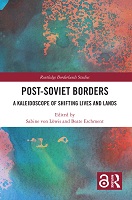Chapter 1 Dynamics of Bordering in the Post-Soviet Space over the Last 30 years
Proposal review
Author(s)
von Löwis, Sabine
Eschment, Beate
Khutsishvili, Ketevan
Language
EnglishAbstract
The disintegration of the Soviet Union changed the status of the borders of its republics: internal administrative borders became international ones that were redefined by treaties between the successor republics, and the former external borders of the Union were similarly redefined. This article shows how these negotiations and further bordering developed differently in the regions of the Baltic States, the western post-Soviet states, the Caucasus, and Central Asia. Various influencing factors played out differently: previous social, cultural, and political orders; nation-building efforts; economic and structural linkages; and competing regional and international political projects. Peace has prevailed around most of the borders, and the population has created ways to maintain social relations. However, starting with the conflicts in the Caucasus in the early 1990s, unresolved conflicts over borders of the successor republics have increased.
Book
Post-Soviet BordersKeywords
bordering; soviet union; external borders; baltic statesDOI
10.4324/9781003169376-3ISBN
9780367770082, 9780367770105, 9781003169376Publisher
Taylor & FrancisPublisher website
https://taylorandfrancis.com/Publication date and place
2023Imprint
RoutledgeClassification
Development studies


 Download
Download